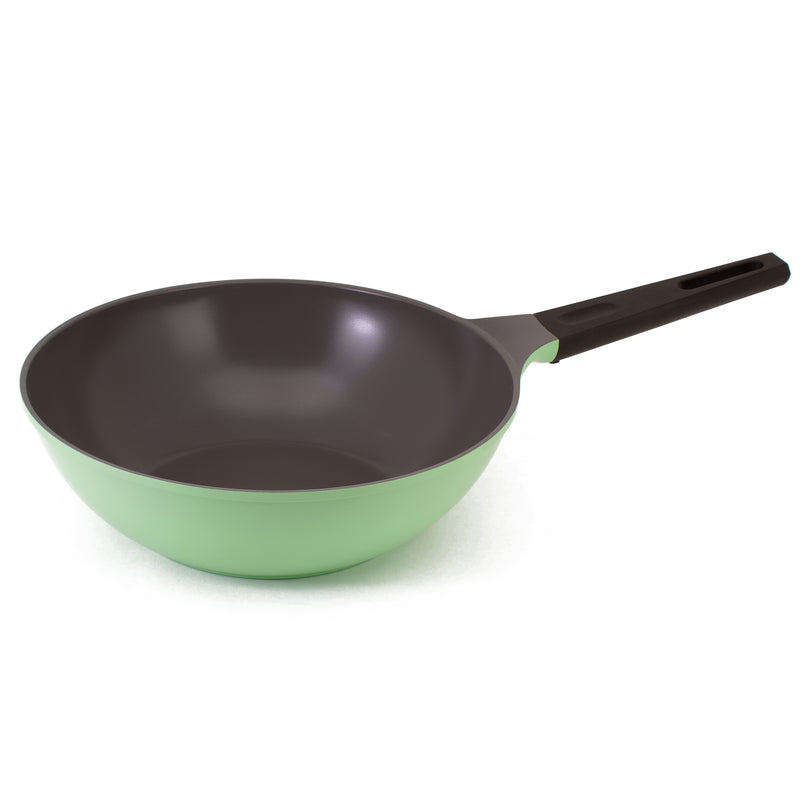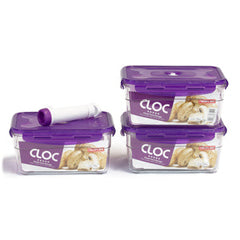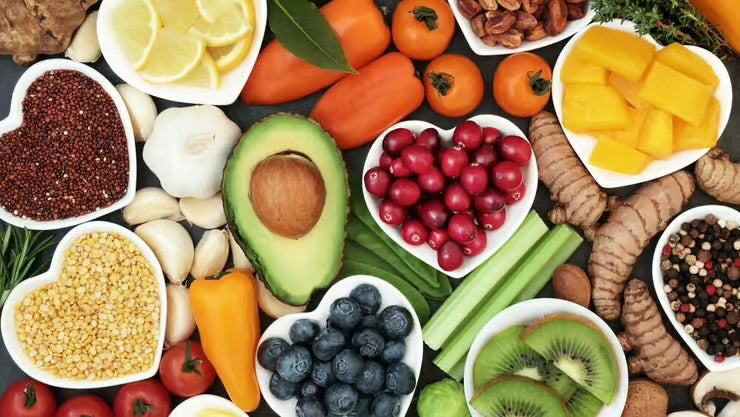Iron, iodine, calcium, magnesium and potassium are the five minerals we desperately need to maintain health. You can find iron in animal food, as well as in lentils, peas, and soybeans. To improve absorption, add food rich in vitamin C, such as red pepper or tomato, to the menu. And how can you get enough iodine? A clinical dietitian from Maccabi explains what damage we may suffer from a continuous deficiency and what is recommended to eat to make up for all the deficiencies; carbohydrates, fats, and proteins are only some of the main building blocks necessary for our bodies to exist, grow, exercise, think, digest and sleep. We see them on the plate in an almost tangible way. But our body also needs vitamins and minerals. These come to us as an integral part of the food, usually in too small quantities for us to notice them tangibly. When we eat an apple, for example, we will feel the sweet taste of the sugar and the juice that is the water, but we will not be able to recognise the vitamin C that is there or the potassium.
Often, because our diet is not always balanced, we diagnose based on tests and symptoms that there is a lack of vitamins and minerals. The supply of dietary supplements that exists today and is accessible to all of us is huge. Every company tries to assure us that if we take their supplement, we will fill an unknown deficiency or make up for a poor diet or intense physical activity, so it is worthwhile and important that we take various supplements. It is important to note that taking nutritional supplements is not a substitute for a balanced diet. The health benefit of taking supplements is only when there is evidence or actual fear of a deficiency in that vitamin or mineral.

You should consume minerals through a rich and varied diet (image shutterstock)
What are minerals and which ones are we almost always lacking?
Minerals are natural components found in the soil and drinking water. We get minerals through our food, from plant or animal sources. When the nutrition or drinking water of "our food" is lacking, our nutrition is also lacking. For example, if our vegetables are irrigated with mineral-poor water or the animals we eat are raised on poor food, then the produce will be accordingly.
Cooking, freezing, sautéing or cutting do not affect or destroy minerals. Some of them come to us in different chemical forms that can change the way of absorption in our body, for example, iron, some come out of the vegetables into the cooking water, for example, potassium, and some, like calcium, need to be consumed away from other minerals in order to improve absorption Iron
1. Iron
Iron is an essential mineral for the normal functioning of the human body. It is part of the hemoglobin molecules found in the red blood cells and plays a role in transferring oxygen to all body tissues. It is also very important in building DNA, the growth process, the immune system, and more. Since iron is a natural mineral, it can appear in multiple chemical forms. The chemical form in which iron is found in various foods affects its ability to be absorbed by the body.
The absorption process occurs mainly in the duodenum (the first part of the small intestine). Unfortunately, most of the iron in the Western menu is found in a form that is more difficult to absorb. An average person absorbs 2-1 mg of iron from food when the absorption changes in certain situations such as pregnancy, iron deficiency, iron excess, intestinal diseases and more.

Fish is a rich source of iron. The tomato improves its absorption (photo: shutterstock)
The most available and efficiently absorbed iron in our body is found in animal sources such as beef, turkey, chicken, fish and eggs. However, you can also get enough iron in a plant-based diet. For this purpose, combining iron-rich foods such as legumes - lentils, peas, chickpeas, white beans, soybeans, nuts, tahini, quinoa, broccoli, and dried fruits is very useful. To improve the absorption of vegetable iron, consuming these foods in combination with foods rich in vitamin C, such as red pepper, tomato, citrus fruits, kiwi, strawberry, and cabbage is recommended.
What happens in the case of an absorption problem?
Anemia may develop, which has long since become a worldwide problem. If we compare deficiencies of other vitamins and minerals, iron gets the first place as the most deficient mineral.
Although Anemia does not have to develop quickly, its damage may be long-term. In babies and children, for example, it may affect cognitive development, behaviour patterns, growth, the immune system, and more. Anemia symptoms can include fatigue, feeling cold, hair loss, and paleness. That is why it is important to consume a diet rich in iron and make sure to perform blood tests according to medical instructions.
The causes of Anemia are many and varied. They are related to a diet low in iron, lifestyle habits, genetics, various diseases, and more. Anemia may occur at any stage of life, but there are more vulnerable populations, including women of childbearing age, pregnant women, babies and children, and vegans and vegetarians.
2. Iodine
Almost everyone remembers a case in which he fell, got scratched and rushed to put iodine on the wound. The substance "iodine" is a chemical element that plays an important role in our body systems. It is found as a base material for the hormones produced by the thyroid gland, which regulates many actions in our body.
In situations where iodine is lacking, we see problems with thyroid activity. A lack of thyroid hormones may lead to damage to energy regulation in the body, temperature regulation, and normal activity of the brain, muscles, and other organs. During pregnancy and breastfeeding, a lack of iodine may lead to damage to the development of the fetus and the nursing newborn. Damage to cognitive development and growth was mainly observed.

There are quite a few solutions for those who avoid animal food. Lentils, for example, are rich in iron (photo: shutterstock)
Groups at greater risk of iodine deficiency are those:
-
Whose diets do not include eggs, fish, seaweed, and dairy products (e.g., vegans, those suffering from milk allergies, etc.)
-
Women in the stages of pregnancy planning.
-
Pregnant women.
-
Lactating women or women who have had frequent pregnancies and births.
3. Calcium
One of the important roles of calcium is building bone mass and teeth. It is important to know that the strength of our bone mass is determined until the age of 20-25, and then the body preserves the existing bone mass. The factors that help preserve bone mass over the years and prevent the development of bone-thinning diseases are calcium in the diet, bone-building physical activity and hormonal status. Calcium supplementation alone is not a way to strengthen bone mass since our genetics greatly influence bone mass. Women and men with a family history of osteoporosis should be medically monitored.

thyroid function. Depends on the presence of the iodine mineral in the body (photo: shutterstock)
The sources of calcium in the diet are varied. Some plant foods are fortified with calcium and vitamin D by the manufacturers, so there is variation in the market between products of the same series. That's why it's important to read food labels to verify the information. The most calcium-rich foods are seitan, fortified milk, fortified soy drinks, yogurt, white cheese, yellow cheese, and white beans.
That inhibit calcium absorption include phytic acid found in bran, whole grains, and nuts, oxalic acid found in cauliflower, spinach, beet leaves, cocoa, caffeine, tea, and cocoa, and minerals such as iron and zinc, mainly in supplements.
Throughout life, the healthy body maintains a constant level of calcium in the blood of 8.5-10.5 mg/dl to allow the existence of life processes such as muscle contraction and release, transmission of nerve impulses, bone and teeth formation, coagulation processes and various metabolic processes. We have no easy way to know if there is a calcium deficiency because calcium levels in the blood remain constant even in situations of deficiency and excess. Changes in blood calcium levels are usually the result of various health conditions.
In various life situations such as pregnancy, breastfeeding, menopause, intense physical activity, sharp changes in weight, selective eating, etc., it is recommended to contact a clinical dietitian to receive personal recommendations for adjusting the calcium dose and the other nutritional components to the special needs.
4. Magnesium
Magnesium is an intracellular mineral involved in many processes in our body: bone building, energy production, muscle activity, and various processes of building and breaking down the body. Therefore, its blood test does not always faithfully reflect its condition in the body since its amount in the blood is only about 1% of the total magnesium. That is, the blood test may be normal when, in practice, there is a deficiency.
Lack of magnesium can cause various symptoms, such as fatigue, lack of appetite, nausea, and vomiting. In severe deficiency, there may be contractions of the muscles of the limbs and face and disturbances in mood and concentration.
You can get a sufficient amount of magnesium through the diet, but you must be careful about eating food containing magnesium. Dietary sources of magnesium include artichokes, green leafy vegetables, especially spinach, parsley, and dill; whole grains such as buckwheat, bulgur, quinoa, whole wheat, and oat bran; legumes, mainly beans, pulses, peas, and soybeans; fish, vegetable fat from sesame and nuts, and beef.
On the other hand, many types of food interfere with the absorption of magnesium, and therefore, it is not recommended to consume them alongside those rich in magnesium: dairy products and products rich in calcium (such as calcium-enriched tofu, for example), beet leaves, cocoa and chocolate products, as well as caffeine found in coffee, tea, including tea Green, cola, and energy drinks.
5. Potassium
Potassium also plays an important role in the normal functioning of the nerve and muscle cells as well as in the operation of the heart. It is also used to balance fluids and salts together with other minerals. Its importance is also known in lowering high blood pressure levels. Many studies have indicated a connection between a diet rich in potassium in childhood and a decrease in the rates of white and blood vessel diseases in adulthood.

Banana is an excellent source of potassium (photo: shutterstock)
The food rich in potassium is very similar to that in magnesium. Legumes, whole wheat and its products, potatoes, tomatoes, carrots, celery, nuts, cocoa, citrus fruits, bananas, anona, kiwi, apricot, melon, dried fruits, beef, chicken and fish. Potassium levels in the body depend on the normal functioning of the kidneys. For healthy people, we would like to increase their potassium intake on the daily menu. However, in the case of any abnormality or increase in values , it is important to seek medical advice urgently.
So, what do you eat and with what? The rule is simple: a diet based on a Mediterranean menu, rich in vegetables and unprocessed food, will provide most of us with everything we need. Even if we drink coffee after eating and slightly lower the absorption of minerals, we will make up for it in the next meal.
The writer is a clinical dietician, Michal Sukman.















